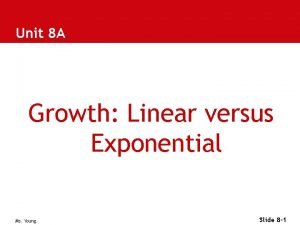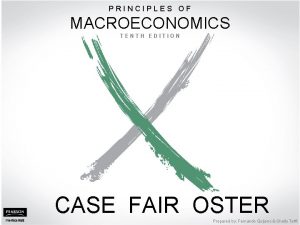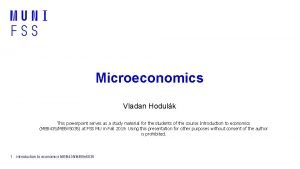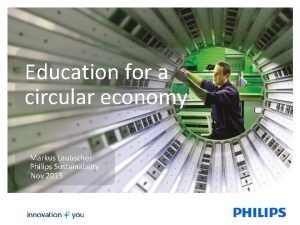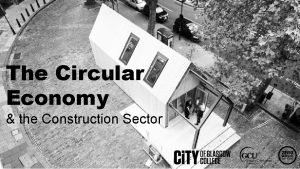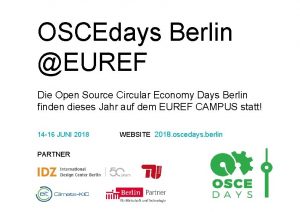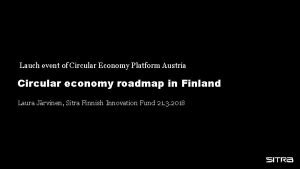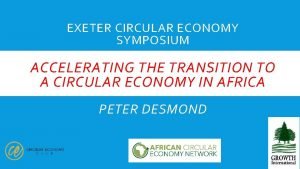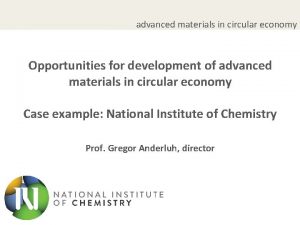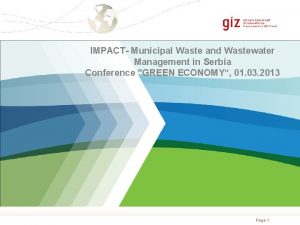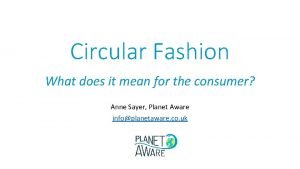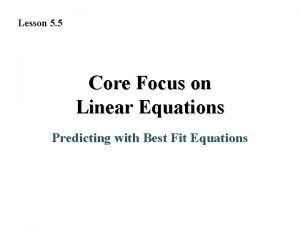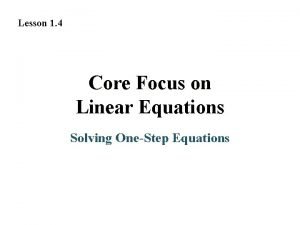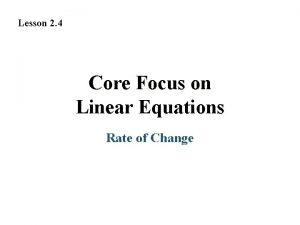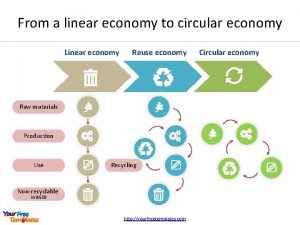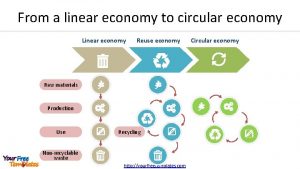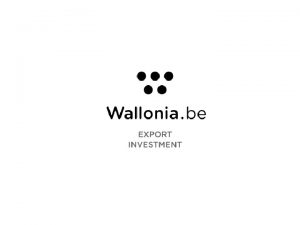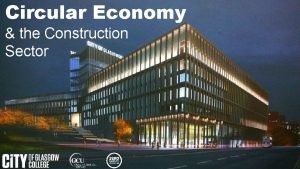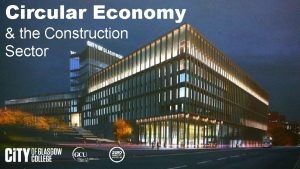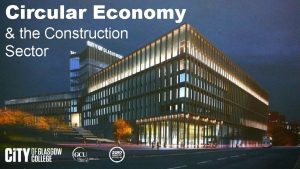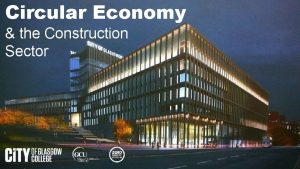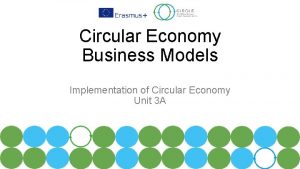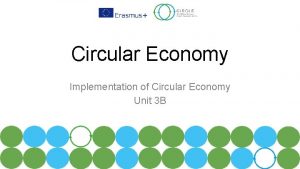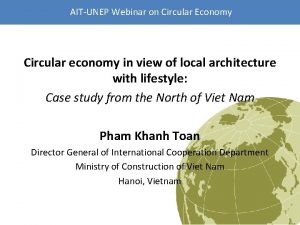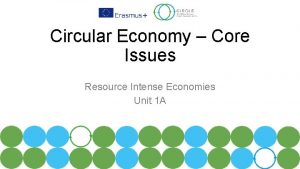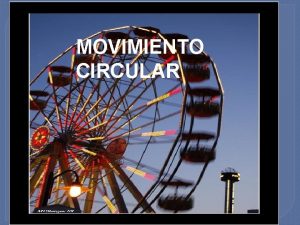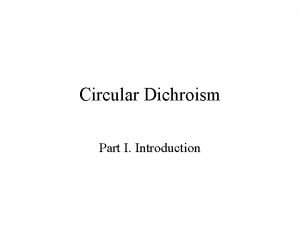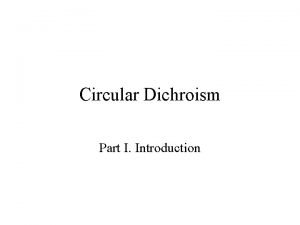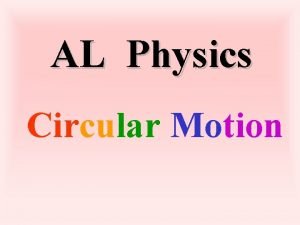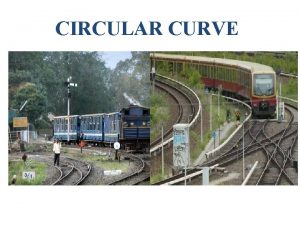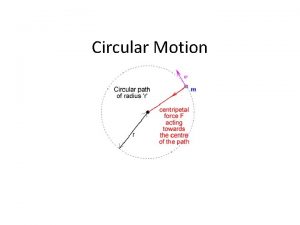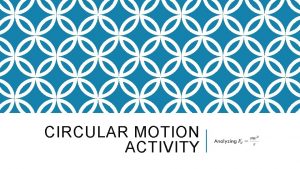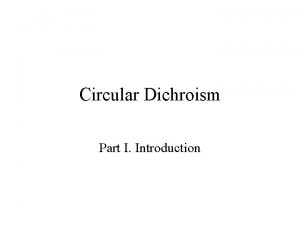Circular Economy Core Issues Linear versus Circular Economy





















- Slides: 21

Circular Economy - Core Issues Linear versus Circular Economy Unit 1 B

Learning Outcomes Learners will be able to: • Understand the two opposing concepts of the linear economy and the circular economy. • Identify the environmental impact of the linear economy. • Understand the reasoning for circular transitions. • Be able to understand CE applicability in businesses.

Introduction The linear approach to material production and consumption known as the linear economy, is now being challenged by the concept of circular economy (CE) approach. Organizations are exploring how CE can aid their product design, whilst at the same time, considering the environment and coping with waste management.

The Linear Economy • sss Extraction of Resources

The Linear Economy Definition • An economy is a large set of inter-related production and consumption activities that aid in determining how scarce resources are allocated. In an economy, the production and consumption of goods and services are used to fulfill the needs of those living and operating within it. A linear economy or cradle to grave economy, takes natural resources, metals, oil, biological materials, converts to higher value products, that are used and then disposed. Each stage producing a value in terms of a monetary equivalent. This is used to enable systems in society, but ultimately the costs are to the environment via pollution, climate change and resource depletion. Natural Resources Pollution Goods and Services Consumer expenditure Households Pollution Wages, rent, dividends Factors for productions Business

Discussion Systems are designed to deliver a product and there are many benefits. What are the benefits of the current economic system to society, and what are the major disadvantages to the way the economic system is currently designed?

World Population • The world’s population is expected to reach 10 bn in 2050. This means more resource consumption is needed to meet demand. This is also expected to be more expensive as demand will be high. But we have just 1 planet! Our resources, the earth’s raw materials, are not limitless. Hence the need for a Circular Economy!

The Circular Economy Consideration of Circular Economy at the Design Stage Extraction of Resource Recycling Manufacturing Distribution Residual Waste at a Sustainable Level Collection Consumption, Use, Reuse, Repair

Circular Economy Definition • The Circular Economy (CE) is an alternative to the traditional linear economy (make, use, dispose) in which we keep resources in use for as long as possible, extract the maximum value from them whilst in use, then recover and regenerate products and materials at the end of each service life. (definition taken from wrap. org. uk) fd do pe n e io lu gis l at Va le te as ion fw let do Circular Economy ep ee Sp rc ee ep Sp tio n Economic benefits Resource dependency Price volatility n tio ra ne ge Environmental Impact Resource Scarcity

The Circular Economy • The practice of the milkman delivering milk in bottles that were re-collected, washed and sterilised, then re-filled is an example of a Circular Practice. • To succeed, the provide (milkman) must have the means and facilities to collect, maintain and reuse the glass bottles. • The customer must see the benefit too, e. g. in the form of a reduced price for return of the bottles. The Ellen Macarthur Foundation has several resources including this introductory video https: //www. youtube. com/watch? v=z. CRKv. Dyy. Hm. I

Discussion Why is the Circular Economy important? Identify the main elements in the Circular Economy concept Can you think of 2 reasons why Circular Economy is considered as the next viable economic model?

Reasons for the Circular Transition • Environment: Conservation of natural resources, including water and energy, pollution, climate change. • Economic: Decoupling economic growth from resource growth. Designing out waste and making things last. • Social: Consumers want more repairable products. Products at end of life need dismantling, recycled and refurbished. This means more employment.

Case Studies

Case study 1 : NIKE Nike is one of the biggest sporting brands in the world. They launched a circular programme named "Consider", which reflects consideration to the consumer and mostly the environment. • https: //www. youtube. com/watch? v=h. DOHExtc 7 WY

Case Study 2: Mud Jeans New jeans are made from discarded ones with 40% recycled content. Jeans are offered on a subscription model: repairs are free and users can swap their jeans for a new pair. Result in less resource use, less waste and less environmental impact. Globally, less than 1% of materials are recycled in the fast fashion world, resulting in $100 billion/ year. https: //www. ellenmacarthurfoundation. org/casestudies/pioneering-a-lease-model-for-organic-cotton-jeans

Case Study 3: Biopak “closed the loop” on single-use packaging that end up on landfill. They achieved this by producing 100% biodegradable food packaging. Additionally the company provide collection and composting services for their packaging for 2000 postcodes in New Zealand Australia. Achieving 660, 000 tonnes of packaging and food waste diverted from landfill The company has created 66, 000 bags of nutrient rich compost for farmers. https: //www. ellenmacarthurfoundation. org/c ase-studies/closing-the-loop-on-single-usefood-packaging

Summary • The Linear Economy, involves a take, make, use and dispose system which is overstretching the environment by burning finite resources, causing pollution and expediating the climate change. • The Circular Economy, by contrast, is designed to ”close the loop” by keeping resources in their optimum state for as long as possible, and encouraging reduce, reuse and recycle. Waste is being engineered out of the model. • The Circular Economy enhances Environmental protection, Economic viability and Resource preservation. • Businesses are shifting from linear design to circular.

Quiz Question 1 Making food packaging from biodegradable materials is a linear economy. True or False?

Quiz Question 1 Making food packaging from biodegradable materials is a linear economy. True or False?

Quiz Question 2 What makes Biopak’s Business Circular? • A: Biopak collects compost in Australia and New Zealand. • B: The company sends 660, 000 tonnes waste to landfill. • C: The company compost their waste and provides this as fertilizers to farmers. • D: The company make paper cups.

Quiz Question 2 What makes Biopak’s Business Circular? • A: Biopak collects compost in Australia and New Zealand. • B: The company sends 660, 000 tonnes waste to landfill. • C: The company compost their waste and provides this as fertilizers to farmers. • D: The company make paper cups.
 Linear versus exponential
Linear versus exponential Athenian economy vs sparta economy
Athenian economy vs sparta economy Core economy
Core economy Core economy
Core economy Inner core and outer core
Inner core and outer core Compare and contrast the crust mantle and core
Compare and contrast the crust mantle and core What are the 3 main layers of the earth? *
What are the 3 main layers of the earth? * Purpose of paradox
Purpose of paradox Markus laubscher
Markus laubscher Circular economy meme
Circular economy meme Open source circular economy
Open source circular economy Circular economy forum austria
Circular economy forum austria Exeter circular economy
Exeter circular economy Advanced materials
Advanced materials Linear economy
Linear economy Linear economy
Linear economy Linear economy
Linear economy Form in hair design
Form in hair design . a linear equation in one variable has
. a linear equation in one variable has Core focus on linear equations
Core focus on linear equations Core focus on linear equations answer key
Core focus on linear equations answer key Rate of change
Rate of change
